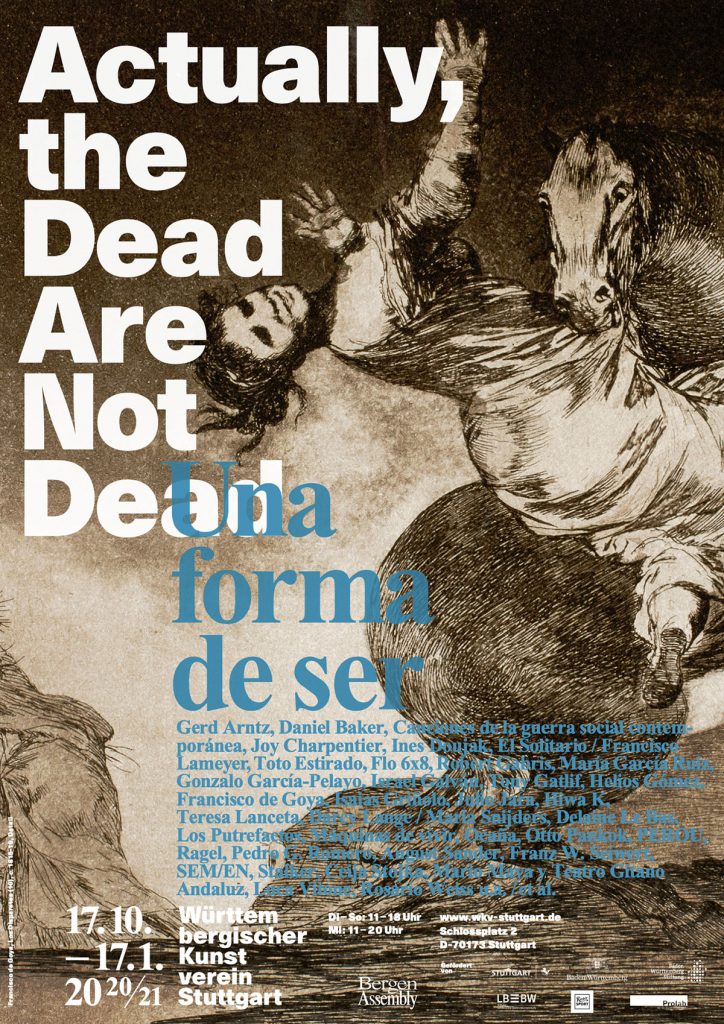Una Forma de Ser
Curators: Pedro G. Romero and María García Ruiz. With Una forma de ser, Württembergischer Kunstverein continues its exhibition series Actually, the Dead Are Not Dead, which goes back to the Bergen Assembly 2019 of the same name

The exhibition Actually, the Dead Are Not Dead. Una forma de ser (A Form of Being or Life) deals with the relations between the festival and the field of the political. It examines the feast as a social and collective stage of emancipation and self-determination and explores the aesthetic and poetic forms that have emerged from it since the 19th century, especially in the environment of the subcultures of the Rom*nja, Flamencos and Bohèmes. The festival as an aesthetic framework for the reversal of social relations (carnival) and the interpenetration of exuberance and rebellion, folklore and avant-garde is explored not only historically, but especially in relation to the present. In doing so, the exhibition combines visual art, music and dance as well as the advanced arts and popular culture from the 19th century to the present day.
Against the background of current experiences of lockdown and distance rules, the thematic field of the exhibition has taken on a new meaning: After all, the festival, which stands for social and physical closeness par excellence, is currently the epitome of the pandemic fall from grace. In addition, certain social groups such as the Rom*nja have been particularly hard hit by the Corona pandemic and its consequences, and their social exclusion, which already existed long before, has become even worse. In this respect, the exhibition also takes up aspects of spatial politics.
Under the title Una forma de ser, the curators, María García Ruiz and Pedro G. Romero, are concerned with negotiating the communities of the Rom*nja, Flamencos and Bohèmes beyond identity politics with regard to forms and strategies of political subjectivation. Images of the self, images of the other and their perverse appropriation generate a series of tensions that are almost impossible to resolve, but which can perhaps contribute to a differentiated examination of these images.
Link to the exhibition website